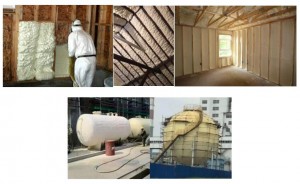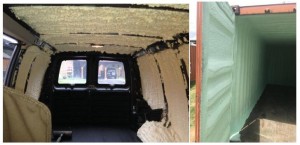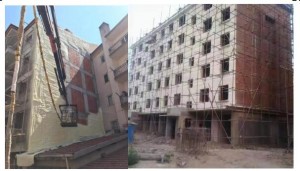Polyurethane spraying refers to the process of using professional equipment, mixing isocyanate and polyether (commonly known as black and white material) with foaming agent, catalyst, flame retardant, etc., through high-pressure spraying to complete polyurethane foaming process on site. It should be noted that polyurethane has rigid foam and flexible foam. Wall insulation is generally used for rigid foam, and flexible foam play a more filling role. Due to its simple forming process and remarkable thermal insulation effect, polyurethane spraying is widely used in building roof and wall insulation.
Polyurethane spraying equipment is widely used in: open cell, building exterior wall thermal insulation spraying, inner wall thermal insulation spraying, cold storage thermal insulation spraying, thermal insulation spraying, poultry farming insulation spraying, etc.Refrigerated car thermal insulation spraying, car sound insulation spraying, cabin thermal insulation spraying, protective thermal insulation spraying for water on the roof, LNG tank anti-corrosion thermal insulation spraying, solar water heater, refrigerator, freezer, etc.
Advantages of polyurethane spraying
1. Better thermal insulation effect
2. High bond strength
3. Short construction period
Disadvantages of polyurethane spraying
1. High cost
2. Restricted by the external environment
Application Of Polyurethane Spraying In HVAC Industry
Due to its high price, the application of polyurethane spraying in the HVAC industry is mainly concentrated in cold storage, refrigerated vehicles and other fields with relatively high thermal insulation requirements.
In addition, some high-end buildings may use polyurethane coating for wall insulation for the purpose of applying for national certification subsidies such as ultra-low energy buildings.
Post time: May-27-2022





